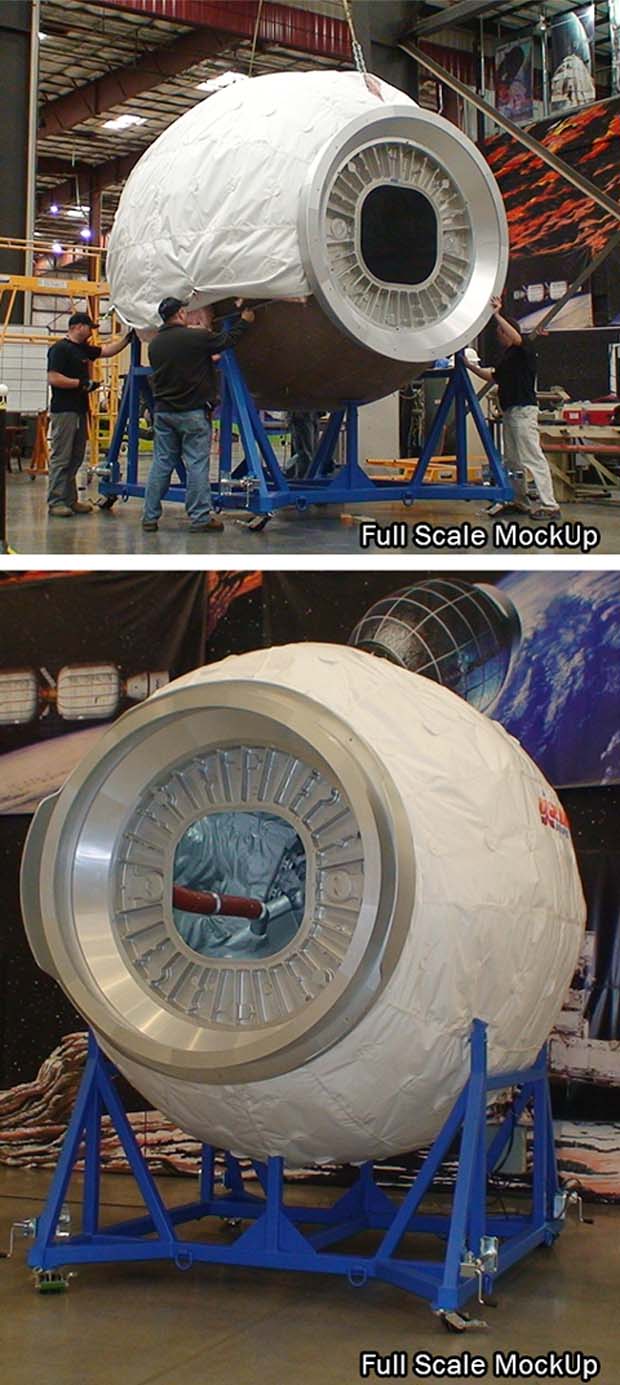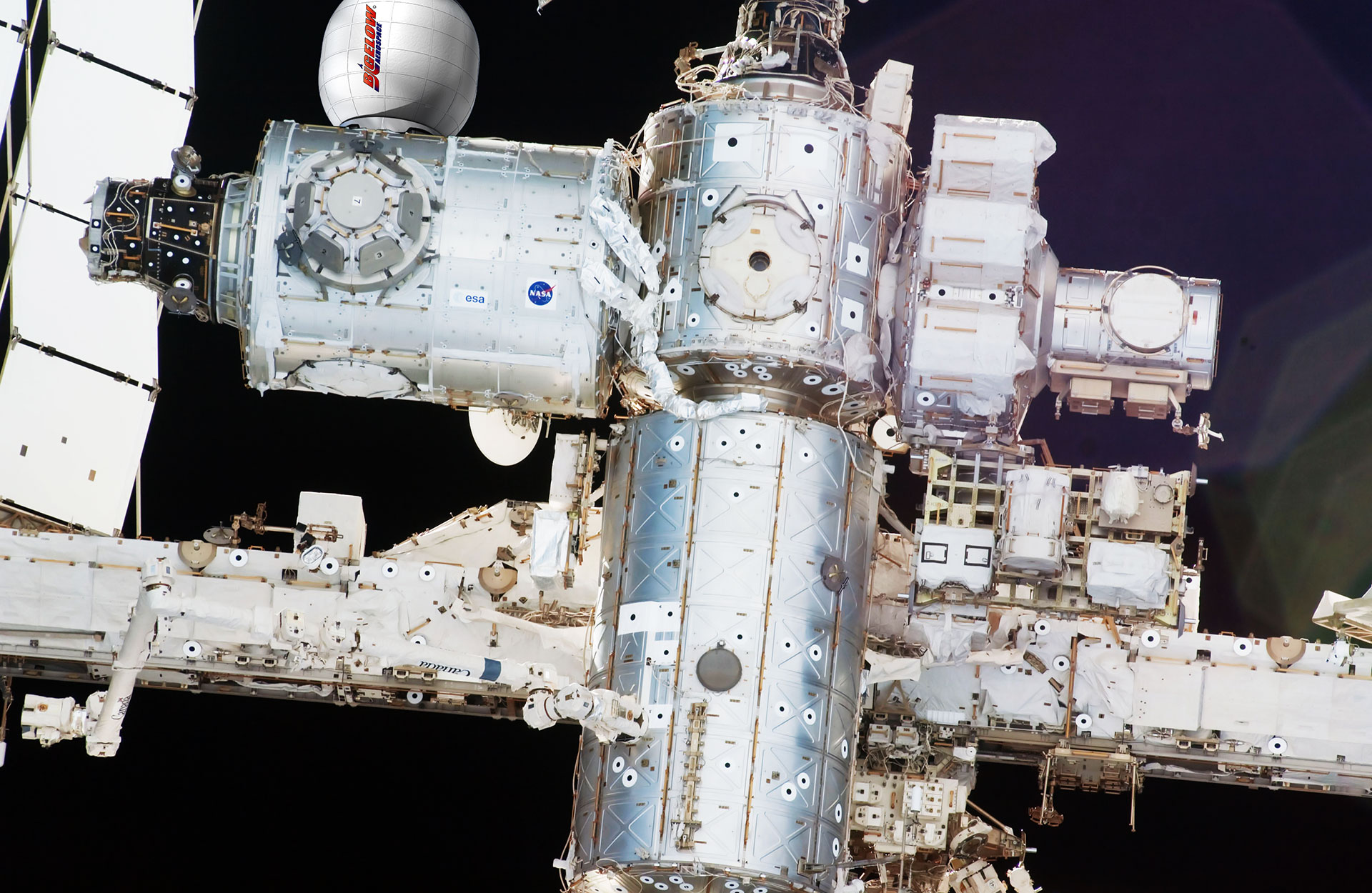Bigelow Aerospace's Inflatable Habitat Ready for Space Station Trip


A new, inflatable addition to the International Space Station is ready for its close-up.
NASA officials viewed Bigelow Aerospace's Bigelow Expandable Activity Module (BEAM) at the company's facility in Las Vegas on March 12. BEAM is scheduled to depart later this year for NASA's Kennedy Space Center in Florida, and then blast toward the station atop SpaceX's Falcon 9 booster.
BEAM's time attached to the orbiting lab should provide a key test for expandable space habitats, which represent a dramatic departure from traditional metallic designs. [Bigelow's Inflatable Space Station Idea in Photos]
"We're fortunate to have the space station to demonstrate potential habitation capabilities like BEAM," Jason Crusan, director of Advanced Exploration Systems at NASA Headquarters in Washington, said in a statement. "Station provides us with a long-duration microgravity platform with constant crew access to evaluate systems and technologies we are considering for future missions farther into deep space."
Wanted: Deep-space habitats
According to Bigelow Aerospace, the demonstration of expandable space habitat technology supports NASA's plans in the realm of human spaceflight, which ultimately could lead to putting boots on Mars. Developing a deep-space habitat is an important step along the path to the Red Planet, agency officials say.
Founded in 1999 by entrepreneur Robert Bigelow, Bigelow Aerospace has as a goal the creation of a new paradigm in space commerce and exploration via the development and use of expandable habitat technology. Expandable habitats are viewed as offering dramatically larger volumes than rigid, metallic structures as well as enhanced protection against both radiation and physical debris.
Additionally, expandable habitats are lighter than traditional systems, take up less room in a rocket fairing for launch, and are seen by advocates as a less-costly alternative.
Breaking space news, the latest updates on rocket launches, skywatching events and more!
As an example, BEAM will measure just 8 feet (2.4 meters) wide in its packed configuration aboard SpaceX's robotic Dragon resupply spacecraft. Once is deployed and inflated, it will add an additional 565 cubic feet (16 cubic m) of volume — about the size of a large family camping tent — that is accessible to astronauts aboard the orbiting laboratory.
Technology demonstration
NASA awarded a $17.8 million contract to Bigelow Aerospace to provide BEAM, which will arrive at the space station in 2015 for a two-year technology demonstration.
After the module is berthed to the station's Tranquility node, astronauts will activate a pressurization system to expand the structure to its full size using air stored within the packed module.
Space station crewmembers will periodically enter the module to gather performance data and conduct inspections. Following the test period, the module will be jettisoned from the station and burn up on re-entry to Earth's atmosphere.
Genesis of the idea
Bigelow Aerospace has already fabricated and deployed two subscale pathfinder spacecraft, Genesis I and Genesis II, which were launched in 2006 and 2007, respectively.
In addition to BEAM, Bigelow Aerospace is pushing forward on development of its full-scale system, which is called the BA 330. This expandable structure provides approximately 11,664 cubic feet (330 cubic m) of internal volume and will support a crew of up to six.
The Bigelow plan envisions BA 330s supporting a variety of public and private activities in and beyond low-Earth orbit.
Bigelow Aerospace is also working on even larger spacecraft, such as its "Olympus" module, which will provide 79,458 cubic feet (2,250 cubic m) of internal volume.
Looking beyond LEO
Bigelow Aerospace is eyeing future use of beyond-BEAM habitats on the moon.
"Bigelow Aerospace sees its role in lunar development as the historic equivalent of the Hudson Bay Company, providing the necessary habitats, equipment and transportation for entrepreneurs to execute their business plans," said Michael Gold, Director of Washington, D.C. Operations & Business Growth for Bigelow Aerospace, LLC.
"Bigelow Aerospace wants to enable individuals, companies, and countries to transform the moon into a dynamic arena for imagination and innovation," Gold told Inside Outer Space.
Gold said that BEAM's International Space Station mission will be the first time that an expandable habitat module will become part of a crewed system. Deployment of full-scale BA 330 habitats in Earth orbit will follow, he added.
"It's vital to deploy, test, and utilize these habitats in low Earth orbit before landing them on the moon," Gold said.
Bigelow Aerospace plans to continue developing expandable tech with an eye toward lunar operations, he added.
"While a great deal of work remains to be done," Gold concluded, "we believe that a private sector lunar settlement could be established much more quickly and affordably than most would suspect."
For an inside look at Bigelow Aerospace and its plans, check out the video here: https://www.youtube.com/watch?v=gFZXl45N0m8
Leonard David has been reporting on the space industry for more than five decades. He is former director of research for the National Commission on Space and is co-author of Buzz Aldrin's 2013 book "Mission to Mars – My Vision for Space Exploration," published by National Geographic with a new updated paperback version to be released this May. Follow us @Spacedotcom, Facebook or Google+. Originally published on Space.com.

Leonard David is an award-winning space journalist who has been reporting on space activities for more than 50 years. Currently writing as Space.com's Space Insider Columnist among his other projects, Leonard has authored numerous books on space exploration, Mars missions and more, with his latest being "Moon Rush: The New Space Race" published in 2019 by National Geographic. He also wrote "Mars: Our Future on the Red Planet" released in 2016 by National Geographic. Leonard has served as a correspondent for SpaceNews, Scientific American and Aerospace America for the AIAA. He has received many awards, including the first Ordway Award for Sustained Excellence in Spaceflight History in 2015 at the AAS Wernher von Braun Memorial Symposium. You can find out Leonard's latest project at his website and on Twitter.



